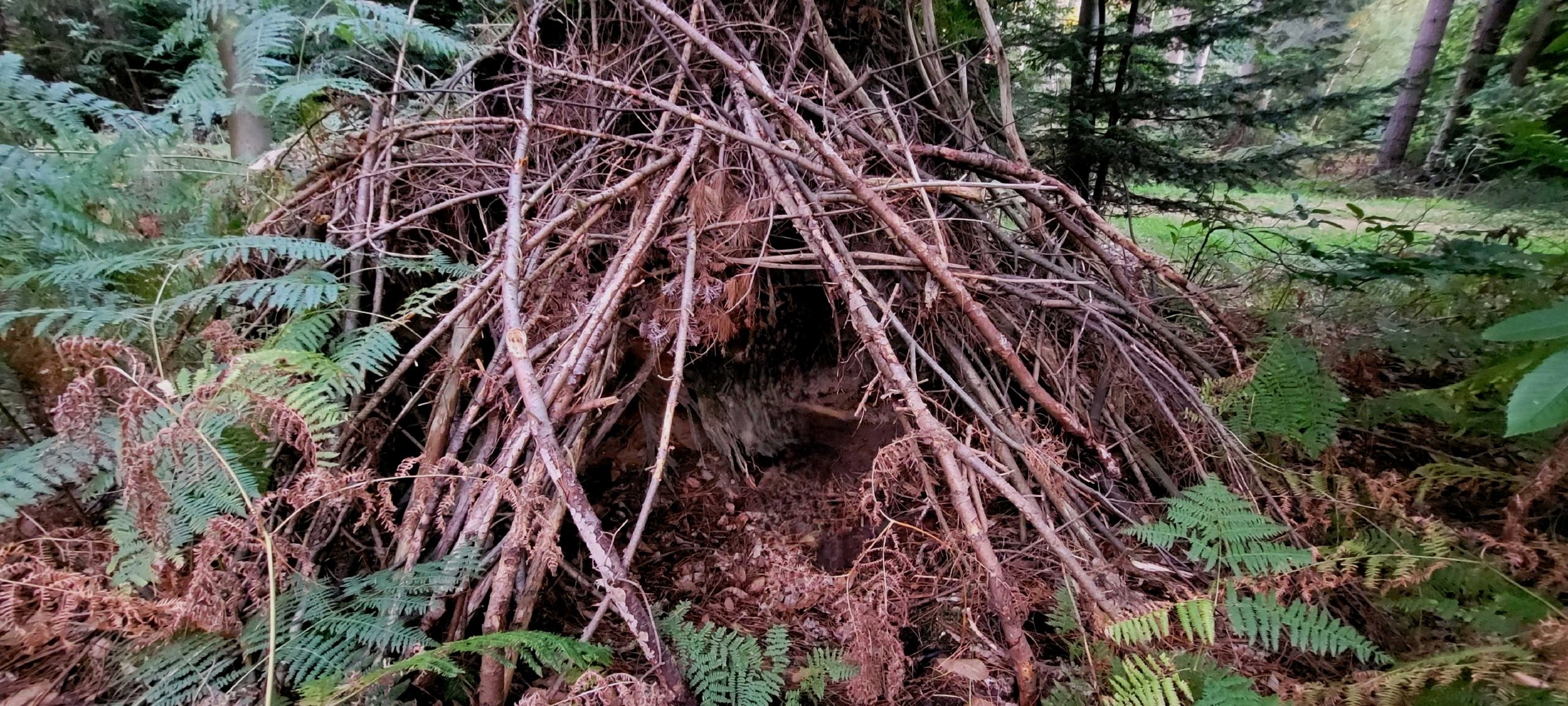
Tree Risk Management
We work with a range of client scales – from a residential garden with a single tree to a private Estate with tens of thousands of trees and public access.
In addition to over 20 years inspecting trees, we are Lantra Professional Tree Inspection certificated and registered users of the Quantified Tree Risk Assessment (QTRA) approach.
We focus firstly on what the usage of a site is before prioritising inspections of trees - or even not inspecting trees at all if the usage nearby is low enough.
As a result, the amount of data collected, and tree work required for a given area is often less than that produced by other survey methods and the cost of managing your tree stock is reduced.
We don’t do contracting, so we only specify the work that meets your needs.
Where trees do need work, our detailed tree work specifications are fully compliant with BS3998:2010, ecologically aware and the minimum needed to fulfil your duty of care. All pruning is wounding so less work is good for trees and your budget.
We collaborate with our clients to set their work priority scheduling and re-inspection approaches.
We strive to be achievable rather than setting arbitrary and unlikely timescales - we won’t set you up to fail with more work than you can cope with and a deadline you can’t meet.
A Sensible Approach to Tree Risk Management
Quantified Tree Risk Assessment (QTRA) is a structured method for assessing tree risk that uses numbers (instead of vague terms like “high” or “low”) to measure the likelihood of harm from tree failures. This approach helps landowners make balanced, proportionate decisions about tree management.
After we have had an initial chat to determine what benefits the trees are being managed for, what your key priorities / available resources are, and what your attitude to risk is, the assessment proceeds like this:
-
First, we assess what could be harmed. This could be users of the space (e.g., pedestrians, cyclists or drivers & passengers in vehicles) or the property within it. We assign a Target Value based on how frequently an area is used. A quiet woodland path? Low target value. The nearby busy A road? Higher target value.
-
When we consider partial or total tree failure, some failures are more serious than others - a small diameter piece of deadwood is less likely to harm a pedestrian than a whole tree falling over. So where we decide that failure is worth considering, we factor this in as the Impact Potential to account for the tree’s size, weight, and location.
-
Next, we use consider how likely the failure is happen within the next year (taking into account the normal seasonal weather patterns and the increasing liklihood of storms and high winds as a result of climate change) and use a structured scoring system to assign it a probability for use within the final calculation.
-
Now comes the number crunching! QTRA combines:
Target Value (who/what is at risk)
Impact Potential (how severe would the consequences be?)
Probability of Failure (how likely is failure?)
The result is a numerical risk score, which we compare against thresholds for acceptable risk.
Get in touch to discuss your site today.
How this helps our clients manage their trees and save money.
We set work priorities and re-inspection intervals in collaboration with our clients. We aim for realistic timescales, ensuring you have manageable workloads and achievable targets - we won’t set you up with more work than you can cope with and a deadline you can’t meet just to get the work off our desk.
With QTRA we can rank the priority to each risk so that the greatest hazard is addressed first rather than presenting you with a number of trees with the same urgency and leaving it up to you.
Costs are kept low as only areas with high enough usage are inspected and only the data from trees that need work is recorded.
QTRA provides us the basis for a defensible, evidence-based approach to tree risk management - helping you to balance public safety, tree conservation, the environment and legal responsibilities.

FAQs
-
We shouldn’t think of trees as either safe or unsafe as all trees carry a degree of risk of failure. It’s important to remember that compared to many things we do in our lives, trees present a very small chance of harm. Recent work commissioned by the National Tree Safety Group (the NTSG) has benchmarked the average individual fatality risk from a falling tree to the UK public for the period 1997 – 2021 at one in 14 million per year. That’s somewhere between death by lightning and being bitten by a shark.
-
Landowners have a legal duty of care under the Occupiers’ Liability Acts (1957 & 1984) to manage tree risks on their property. Local authorities also have responsibilities for trees on public land and highways.
-
The NTSG (National Tree Safety Group) advises a proportionate approach:
· High-use areas (e.g., near roads or footpaths): regular inspections (e.g., every 1-3 years).
· Low-use areas (e.g., woodland or private gardens): less frequent inspections, unless concerns arise.
-
To a degree. The guidance (and case law) suggests that while landowners should remain observant, they should understand the limits of their knowledge and know when to refer an inspection to a professional. Ultimately, few people will know their trees as well as their owners or site managers so informal inspections will always form a critical part of tree risk management.
-
It can do if done correctly and for the right reasons (i.e., to take weight off a damaged union). Poor pruning, however, can increase risk by making failure more likely, so it’s best done by a qualified arborist.
-
Potentially, yes. Under UK common law, tree owners have a duty of care to others and are responsible for preventing foreseeable harm. Regular inspections and maintenance can help demonstrate due diligence and reduce liability.
-
Most UK home insurance policies cover damage caused by falling trees due to storms or unforeseen circumstances. However, insurers may not cover damage if the tree was known to be in poor condition and left unmanaged.
-
Costs vary depending on the number of trees, their location, and the level of assessment required. Using QTRA we can often rule out entire areas of trees from needing inspection due to usage of an area or the size of the trees so we often find that the final costs can be lower than other approaches.
-
That’s an easy one! Reach out to us by phone, email or the contact form at the bottom of the page with your details and requirements, and we’ll get back to you with our quotation and guide you through the process.

